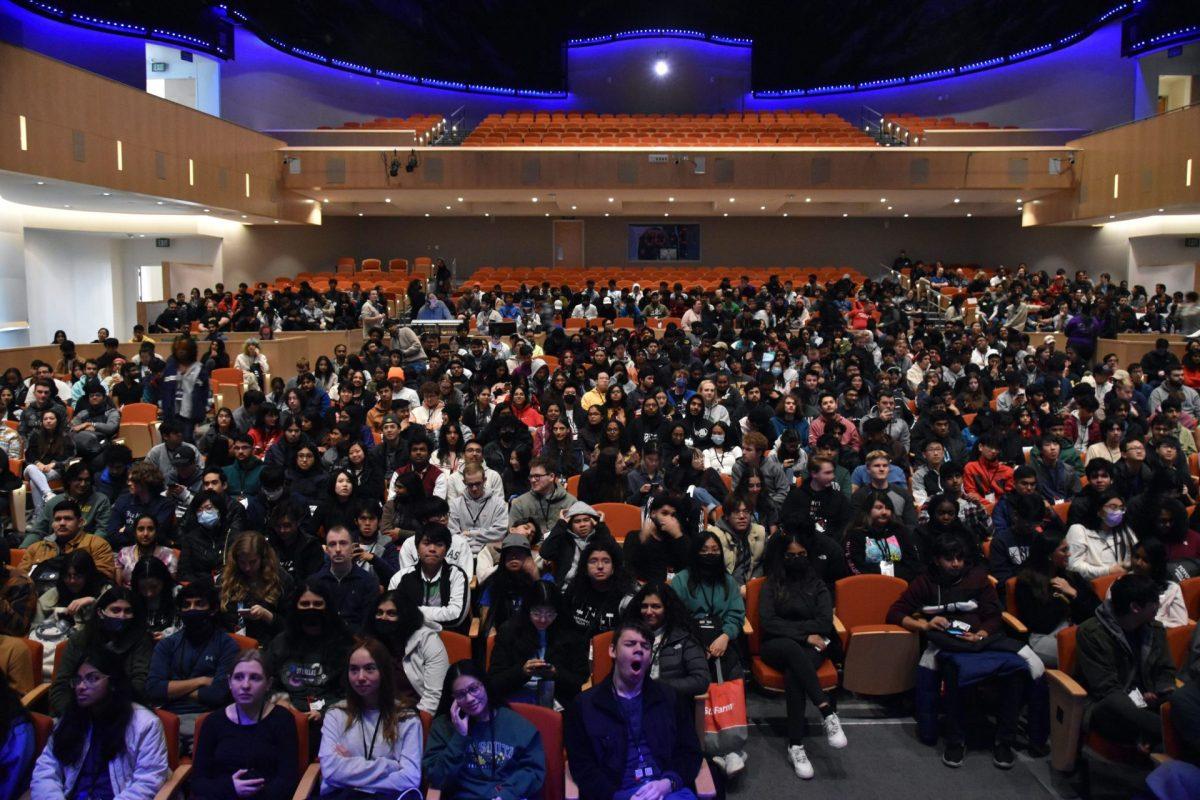UTD has hosted HackUTD every year since 2015; it is the largest hackathon in the state of Texas with around 1,000 attendees in 2023 alone. Planning for this massive endeavor falls entirely on students — how do these Comets manage such a large responsibility?
HackUTD is a 24-hour event where students from all majors come to UTD to build a software or hardware-based project. Operating as the second biggest 24-hour hackathon in America with over 1,000 hackers competing, organizing such a large event can be daunting. Being fully student-run, Comets in UTD’s Association for Computing Machinery are responsible for obtaining funding from large companies, both for prize money and to provide food and merchandise to the attendees. The work behind the scenes in setting up these hackathons can be much larger than the events themselves, taking many months of continuous effort from the dozens of organizers.
Corporate sponsors play a large role in the contest, as without sponsors, ACM would be unable to fund the amenities. In the case of large hackathons such as HackUTD, many corporate sponsors are needed to fund the event. The 2023 iteration of HackUTD received sponsorship from 11 large companies, including Toyota, State Farm and Goldman Sachs. With it, they were able to fund over $30,000 in prizes, in addition to the free food and merchandise provided to all the students who attend. Students are tasked with making new connections with companies and maintaining pre-existing ones in order to secure funding year after year.
“We have some really talented organizers who all work at different internships,” said Salman Jaher, HackUTD co-director. “Anybody who works at a company will have a recruiter contact to reach out to, and we definitely leverage that.”
Once funding is secured, students must plan for the free food and merchandise offered at the hackathon. Consulting with graphic design departments, they mock up in-house designs for merchandise. Many items must be hand-designed and ordered months in advance so they can be produced and shipped overseas at a reasonable price in time for the competition.
Vendors are contacted months in advance to iron out the logistics of providing hundreds of meals to the registered attendees. As the years have progressed, admission into the hackathon has become more competitive, since every attending student must be fed for the duration of the event. Currently, the typical expectation of attendance to HackUTD’s flagship events is around 1,000 in-person students.
During the hackathon, the entire team of organizers along with dozens of student volunteers are responsible for keeping things moving. Generally held in ECSW, dozens of tables need to be set up on every floor to accommodate the one hundred teams, many of whom have traveled across the U.S. and sometimes internationally to participate in HackUTD.
To run the event successfully, a custom website known as hackportal is developed to keep track of the attendants and organizers. This stores their dietary restrictions and saves the information they use to redeem meals, as well as initial check-in information in the form of a QR code. Comets, including computer science senior Nam Truong, work on the backside of the event by designing event software; every year, thousands of students create accounts on HackUTD’s website as they sign up for the competition.
“When I first joined, I had no experience at all, they took me in as a tech member. Starting freshman year I developed more skills while working on the website,” Truong said. “[I gained] hands-on experience while working on a team … HackUTD gave me a huge boost in experience, being able to learn the tech side of things.”
The final hurdle is organizing judging, as every project needs to be fairly assessed by an experienced student or professor. In prior years, this has proven extremely difficult to manage, as ideally judging should encompass several hours at the very end of the event. Grading criteria are created by the event organizers, encompassing several general categories which projects are judged against. Through several rounds of judging, projects are gradually filtered down to eventually reveal the winners for each respective category.





